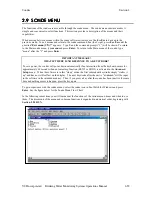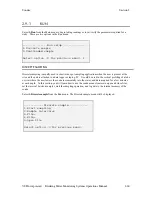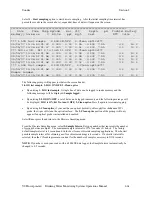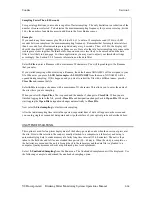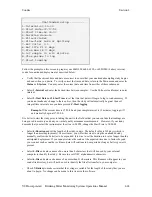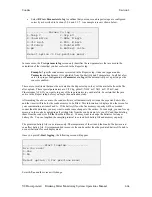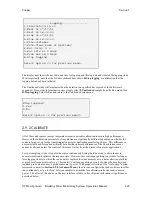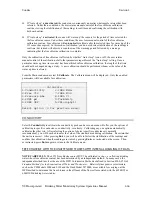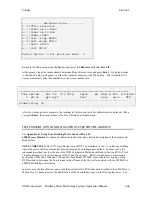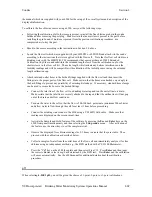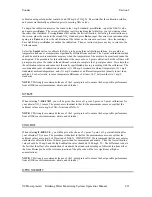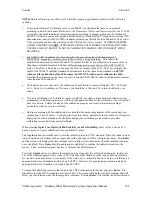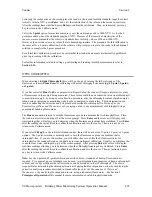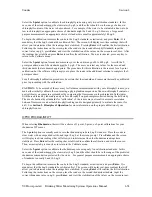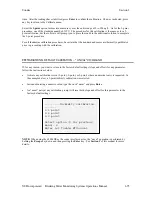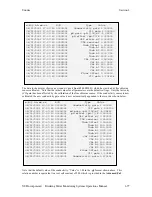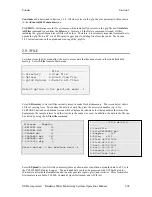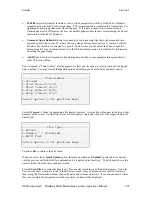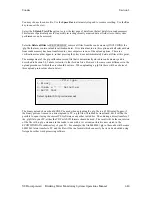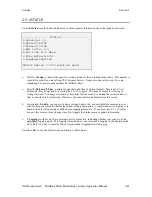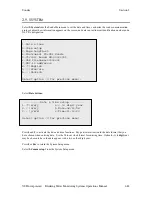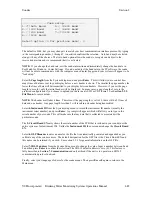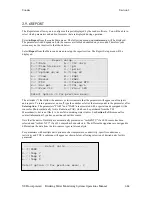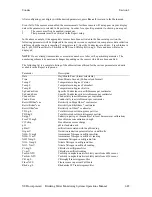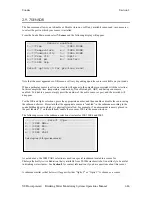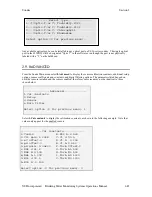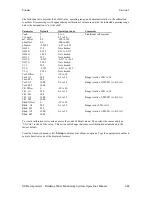
Sondes
Section
2
YSI Incorporated
Drinking Water Monitoring Systems Operations Manual
2-73
Following the instructions on the screen, place the sonde in the second turbidity standard, input the correct
turbidity value in NTU, press
Enter
, and view the stabilization of the values on the screen in real-time.
After the readings have stabilized, press
Enter
to confirm the calibration. Then, as instructed, press any
key to return to the Calibrate
menu.
Select the
3-point
option for maximum accuracy over the entire range of 0 to 1000 NTU. As for the 2-
point procedure, one of the standards must be 0 NTU. Because of the linearity characteristics of the
sensors, we recommend that the other two standards have turbidity values of 100 and 1000 NTU.
However, the user can select any values that are deemed appropriate. The procedure for this calibration is
the same as for a 2-point calibration, but the software will prompt you to place the sonde in the additional
solution to complete the 3-point procedure.
For all turbidity calibration procedures, be certain that the standard and sensor are thermally equilibrated
prior to proceeding with the calibration.
For further information related to setting up, calibrating and running turbidity measurements, refer to
Section 5.11.
OPTIC CHLOROPHYLL
When selecting
10-Optic Chlorophyll,
there will be a choice of zeroing the full scale range of the
fluorescence sensor (
Fluor Zero
), or calibrating with actual chlorophyll standards (
µg/L 1-point, 2-point,
or 3-point
).
If you have selected
Fluor %FS
as a parameter in Report Setup, the sonde will report only relative values
of fluorescence in the sample being measured. These values could then be converted into actual chlorophyll
concentrations in µg/L by using a post-calibration procedure, after the chlorophyll content of grab-samples
taken during a sampling or monitoring study has been analyzed in a laboratory. This determination can
involve conducting the extractive analysis procedure described for chlorophyll in
Methods for the
Examination of Water and Wastewater
or by carrying out an
in situ
measurement of chlorophyll using a
commercial benchtop fluorometer.
The
Fluor zero
option is used to zero the fluorescence probe in a medium that is chlorophyll-free. Place
the sonde in clear water, and input 0 at the screen prompt. Press
Enter
and the screen will display real-
time readings that will allow you to determine when the fluorescence readings have stabilized. Press
Enter
after the readings have stabilized to confirm the calibration and zero the sensor. Then, press any key to
return to the Calibrate menu.
If you select
Chl µg/L
in the initial calibration routine, there will be a choice of 1-point, 2-point, or 3-point
options. The 1-point selection is normally used to zero the fluorescence probe in a medium that is
chlorophyll-free. If you use this method, you will either choose to utilize the default sensitivity for
chlorophyll in the sonde software or to update a previous multipoint calibration. Usually you will place the
sonde in clear water, and input 0 µg/L at the screen prompt. After pressing
Enter
the screen will display
real-time readings allowing you to determine when the chlorophyll readings have stabilized. Press
Enter
after the readings have stabilized to confirm the calibration and zero the sensor. Then, as instructed, press
any key to return to the Calibrate menu.
Note:
For the 2-point and 3-point calibrations described below, standards of known fluorescence are
required. Two general types of standards can be used: (a) phytoplankton suspensions of known chlorophyll
content, and (b) dye solutions whose fluorescence can be correlated to that of chlorophyll. The user is
responsible for determining the chlorophyll content of phytoplankton suspensions, either by employing the
extractive analysis procedure described in
Standard Methods for the Examination of Water and
Wastewater,
or by analyzing the suspension
in situ
using a laboratory fluorometer. See Section 5,
Principles of Operation
of this manual for more information about chlorophyll standards.

